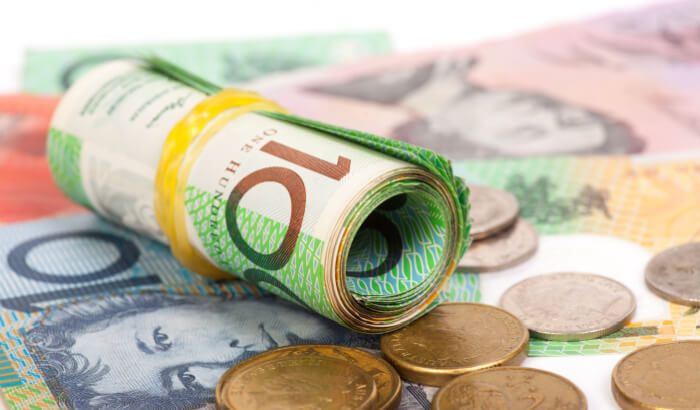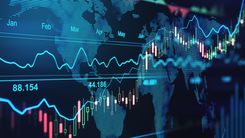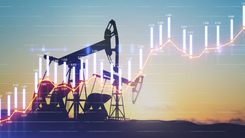
Wednesday Oct 4 2023 18:19

8 min

The Australian dollar (AUD/USD) fell to trade at $0.63 on Wednesday, reaching its lowest levels in 11 months following the Reserve Bank of Australia's decision to maintain its cash rate at 4.1% during its September policy meeting. The policy decision, widely anticipated by markets, marked the fourth consecutive interest rate pause by the RBA.
However, there is a likelihood that the RBA will hike rates to a peak of 4.35% by the end of this year as inflation remains above the 2% to 3% target range, according to a Reuters poll.
The central bank also acknowledged that despite domestic and international challenges, the economy performed better than anticipated in the first half of the year.
The Australian dollar, also known as the “Aussie” in forex markets, faced renewed pressure from a robust U.S. dollar and rising Treasury yields. This pressure intensified as robust economic data from the U.S. reinforced the belief that the Federal Reserve (Fed) would maintain “higher for longer” interest rates. A number of Fed officials have issued hawkish comments in recent days, as highlighted by Markets.com Chief Market Analyst Neil Wilson.
Calculate your hypothetical required margin for a Forex position, if you had opened it now..
Category

Instrument


Bid
Ask
Account Type
Direction
Quantity
Amount must be equal or higher than
Amount should be less than
Amount should be a multiple of the minimum lots increment
USD
EUR
GBP
CAD
AUD
CHF
ZAR
MXN
JPY
Leverage
Required Margin
Required Margin
Current conversion price:
Past performance is not a reliable indicator of future results.
Economists at Netherlands-based bank ING reviewed the RBA’s decision in their AUD forecast on Tuesday:
"The RBA kept rates on hold as Michele Bullock made her debut as Governor. Markets are pricing in around 10 bps of tightening by December. We are more hawkish than the general consensus, seeing non-negligible chances that a CPI surprise will force one last hike to the peak.
Ultimately, even another hike would not be a game changer for the Aussie.
The sharp rise in US yields and soft risk environment should keep AUD/USD under pressure for now.
Risks are now that the correction extends to 0.6200/0.6250.”
Given the interest rate differentials between the U.S. and Australia, investors are flocking to the dollar as it generates a higher yield than the Aussie, Jamieson Coote Bonds executive director Angus Coote told ABC News column The Drum:
"[The Australian dollar] has come under further pressure as the RBA held rates on hold for a fourth straight month. The RBA wording in the statement following the announcement was very similar to previous months suggesting that rates could be on hold from here.
Very simplistically — given the interest rate differentials between Australia and the USA, people will buy the [US dollar] for the yield [return] advantage it carries over Australia.
RBA cash rate is at 4.10 per cent [while the Federal Reserve] funds rate is at 5.375 per cent."
In their Aussie to dollar forecast, economists at Rabobank said the pair could slide to $0.62 within the next three months:
“While the market has not ruled out another hike by the RBA, interest rate differentials have been a key factor in pushing AUD/USD lower since July as the market finally adjusts to the higher for longer mantra from the Federal Reserve.
Concerns that slower growth in China will feed back into its major trading partners are also a negative AUD factor, though iron ore prices have remained well supported after their spring dip.
In view of the strength of the USD, we see risk of a push lower to AUD/USD 0.62 on a three-month view.”
AUD forecast by economists at MUFG agreed with Rabobank’s assessment, saying the Aussie could drop to 0.62 if U.S. yields continued to surge — although the trajectory would likely reverse by year-end as the American economy slows and Chinese stimulus starts to show results:
“If US yields continue to grind higher it is very likely that we will see lows around where we got to last September/October time (0.6200).
Whether China developments reinforce the move lower or help support AUD remains unclear but at this juncture, we see the China pessimism as likely to continue over the short term which will likely add to downside pressure for AUD/USD.
If we do go lower in AUD/USD we would expect the move to reverse as US economic activity slows into year-end and China policy stimulus starts to show through in China data.”
Analysts at Frankfurt-headquartered Commerzbank wrote that while the RBA may leave current interest rate levels unchanged in the coming months, it will likely also prefer a “higher for longer” approach, which could potentially support the Aussie in the medium term:
“After four meetings with unchanged interest rates, there is certainly not too much to be said for a surprising rate hike in November. However, this mainly depends on the data published until then. Among other things, the quarterly inflation figures are on the agenda at the end of the month.
Regardless of the question of whether there will be another rate hike, however, the focus is likely to shift increasingly to the further outlook. And in view of the still elevated inflation, the robust labor market and currently solid growth, there is much to suggest that the RBA will not lower interest rates next year for the time being. This should also benefit the Aussie in the medium term.”
In their latest FX Snapshot on October 3, analysts at Citibank Hong Kong were bearish in their Australian dollar forecast:
“Higher nominal wages, a large stock of excess savings and a strong labor market still raise upside risks to spending and growth for the remainder of the year which leads Citi analysts to retain one final rate hike in December of 25bps to take the RBA cash target to 4.35%.
Tactically, a bullish AUD view may still be expressed via a short GBPAUD cross that has started to trend down since late August. More medium-term view, AUD outperformance vs. NZD and CAD looks more likely.”
Citi’s 3-month and 6-to-12-month AUD forecasts were neutral, as they saw the AUD/USD rate at a potential average of $0.65. The current exchange rate of $0.62 may indicate that the forecast is moderately bullish.
The bank's long-term projection for AUD/USD was bullish, projecting the Aussie to trade at $0.76.
At the time of writing, the AUD/USD rate stood at $0.6318, as per Marketwatch data.
When considering foreign currency (forex) for trading and price predictions, remember that trading CFDs involves a significant degree of risk and could result in capital loss. Past performance is not indicative of any future results. This information is provided for informative purposes only and should not be construed to be investment advice.
Asset List
View Full ListLatest
View all
Thursday, 20 February 2025

8 min

Thursday, 20 February 2025

5 min

Thursday, 20 February 2025

2 min



